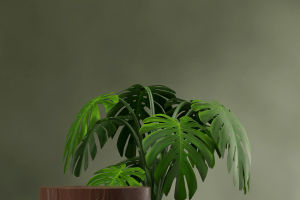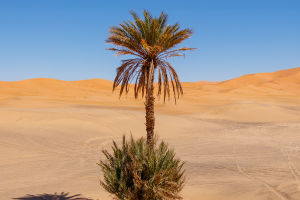The Bird of Paradise flower is a tropical plant that originates from South Africa.
Its unique and gorgeous appearance has made it a favorite among gardening enthusiasts and indoor plant lovers worldwide.
The Bird of Paradise flower got its name because its blossoms resemble flying birds. The flowers are colorful and exotic and create a tropical atmosphere. The leaves of the Bird of Paradise flower are broad and dark green, similar to those of banana trees.
They can typically grow to more than one meter long and exhibit an elegant, curved shape. The flowers generally bloom from winter to spring.
The inflorescence's shape is distinctive, with petals presenting a bright contrast of orange and blue that attracts many birds, especially hummingbirds. This plant thrives in warm, humid environments and usually grows best in sunny locations.
In gardening, the Bird of Paradise flower is not only popular as an ornamental plant, but its cultivation techniques have also spread widely. Planting Bird of Paradise flowers requires ample sunlight and moderate watering; the soil must maintain good drainage to avoid waterlogging and root rot.
While they are suited for tropical climates, they can also be grown indoors in warmer regions. When the flowers bloom, they explode into vibrant colors, adding vitality and liveliness to any garden.
Beyond its aesthetic appeal, the Bird of Paradise flower holds cultural significance. It is often used as a decorative flower for weddings, celebrations, and other special occasions. In South Africa, the Bird of Paradise flower is regarded as the national flower, symbolizing freedom and beauty.
Its flower language is "exotic," representing tropical passion and natural beauty. Consequently, many people choose this flower when decorating their homes, offices, or commercial spaces to create a relaxing and pleasant atmosphere.
Ecologically, Bird of Paradise flowers play an important role by attracting various pollinators, especially birds. When the flowers bloom, their nectar glands attract birds that come to collect nectar.
In this process, the birds inadvertently help the plants spread pollen, thus promoting their reproduction. This ecological relationship illustrates the harmonious symbiosis between plants and animals in nature.
However, it is essential to note that Bird of Paradise flowers may face threats from pests and diseases during cultivation, such as aphids and whiteflies. These pests can adversely affect plant growth and flower development.
Therefore, the health of the plants should be regularly monitored during cultivation, and appropriate prevention and control measures should be implemented when necessary to ensure healthy growth.
In recent years, with the rising popularity of tropical plants, the market demand for Bird of Paradise flowers has also increased. They are not only used for home gardening but are also widely utilized in the commercial flower market, becoming popular decorative plants in hotels, restaurants, and office spaces.
Their unique shape and stunning colors make Bird of Paradise flowers stand out among other varieties, making them a favored choice.
Bird of Paradise flowers have become beloved by people worldwide for their unique beauty and rich symbolic meaning. Whether in home gardens or public spaces, their presence can evoke a tropical atmosphere and a pleasant mood.
For gardening enthusiasts, planting and caring for Bird of Paradise flowers is not only enjoyable but also a means of connecting closely with nature.
As people become more conscious of the ecological environment and the importance of natural beauty, Bird of Paradise flowers will undoubtedly continue to be cherished globally.


